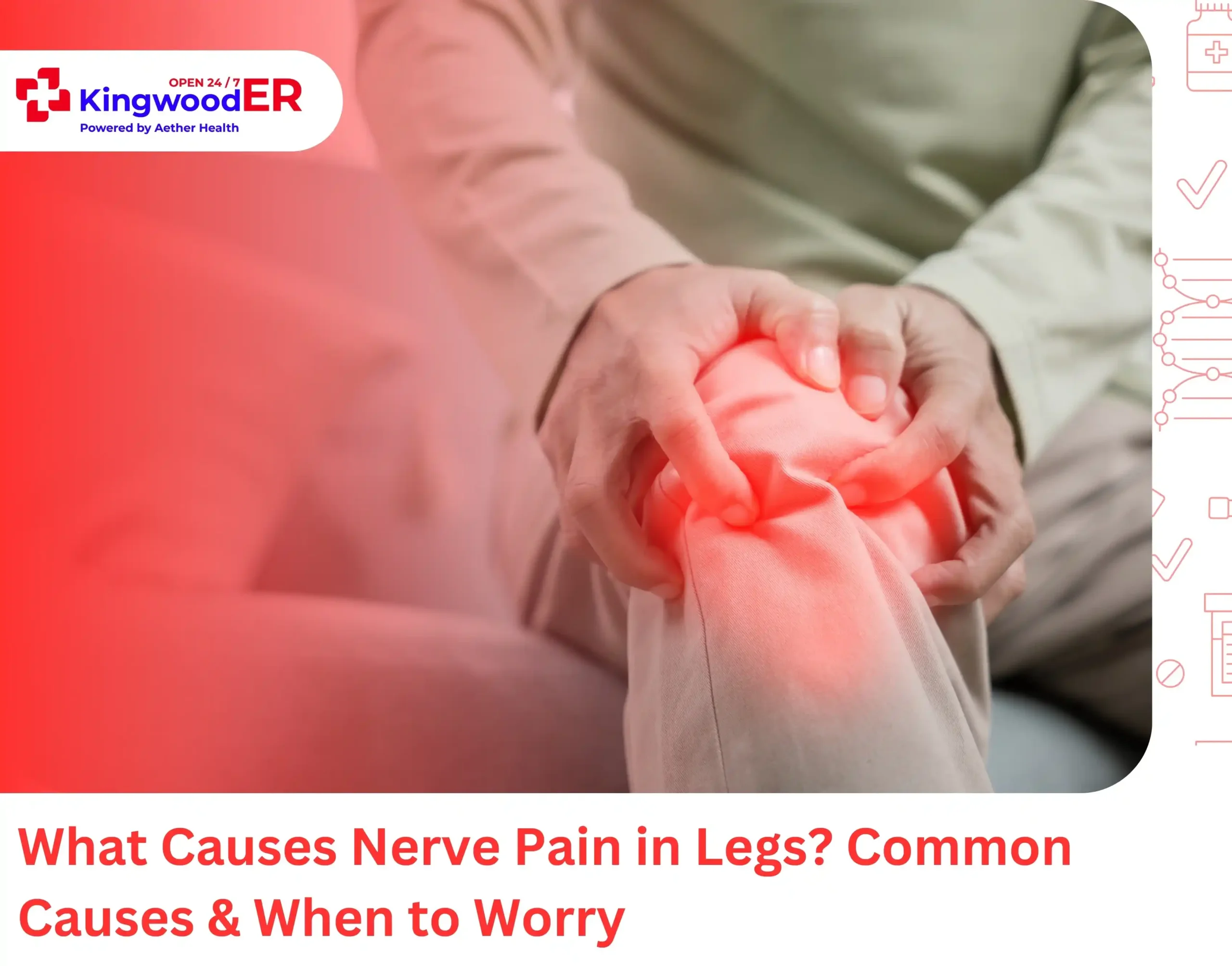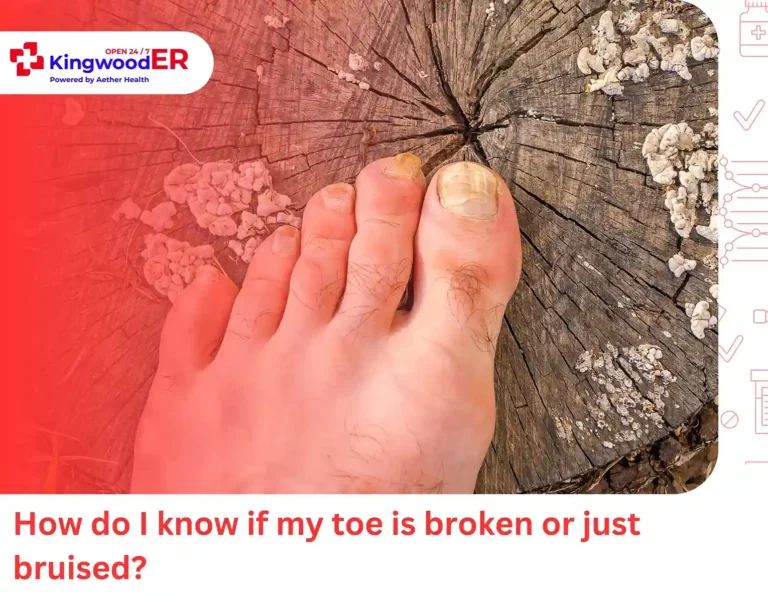Understanding what causes nerve pain in legs helps identify the right solution and determines when symptoms signal a medical emergency requiring immediate attention.
Nerve pain in legs, also known as neuropathic pain, creates sharp, burning, or tingling sensations that feel like “pins and needles”. Unlike muscle pain from overuse, this neuropathic discomfort stems from nerve irritation, compression, or damage.
Several conditions can trigger nerve pain in legs. The most common causes include sciatica symptoms, diabetes complications, pinched nerves, and other conditions that lead to peripheral neuropathy or leg nerve damage. Each cause creates distinct patterns of pain and requires different treatment approaches.
1. Sciatica and Pinched Nerves

One of the most frequent causes of leg nerve pain is sciatica. Sciatica occurs when the sciatic nerve, which is the largest nerve in the body, is irritated or compressed, usually by a herniated disc or spinal stenosis. This can cause pain that radiates from the lower back into the buttock, thigh, calf, and sometimes even the foot.
Common Sciatica Symptoms:
- Sharp or shooting pain down one leg
- Numbness or tingling in the leg or foot
- Weakness in the leg muscles
- Pain that worsens when sitting, coughing, or sneezing
Pinched nerves in the lower back or hip can produce similar symptoms. If untreated, prolonged compression can lead to leg nerve damage.
2. Diabetic Neuropathy
People with diabetes are at higher risk of nerve pain due to diabetic neuropathy. Over time, high blood sugar damages nerves, especially in the legs and feet. This can lead to burning, tingling, or numbness that may become worse at night.
Symptoms of Diabetic Neuropathy:
- Burning or stabbing pain in the legs or feet
- Numbness or reduced ability to feel temperature or pain
- Tingling or “pins and needles” sensation
- Muscle weakness
Diabetic neuropathy increases the risk of foot ulcers and infections, as patients may not notice injuries due to numbness. Good blood sugar control is essential to slow progression.
3. Peripheral Neuropathy
Peripheral neuropathy refers to damage to nerves outside the brain and spinal cord. Aside from diabetes, it can be caused by vitamin deficiencies (especially B12), excessive alcohol use, infections (like shingles), autoimmune diseases, chemotherapy, or certain medications.
Symptoms of Peripheral Neuropathy:
- Tingling or prickling sensations in legs
- Loss of coordination or balance
- Sharp, stabbing pains
- Sensitivity to touch, even from clothing or bed sheets
Peripheral neuropathy can affect both legs and sometimes arms, making it a widespread condition requiring careful medical evaluation.
Other Causes of Leg Nerve Pain

In addition to sciatica and neuropathy, there are several other potential causes:
- Injuries and trauma: Accidents, fractures, or surgeries can damage nerves in the leg
- Spinal stenosis: Narrowing of the spinal canal compresses nerves
- Herniated discs: Discs pressing on nerves cause radiating pain
- Multiple sclerosis (MS): An autoimmune disease that damages nerve coverings
- Infections: Shingles or Lyme disease may cause leg nerve pain
- Poor circulation: Reduced blood flow can mimic nerve pain or worsen existing neuropathy
When to Seek Medical Help
See a doctor if you experience:
- Sudden severe leg pain, numbness, or weakness
- Loss of bladder or bowel control (possible spinal cord emergency)
- Persistent burning, tingling, or stabbing pain
- Leg injuries that result in nerve related symptoms
Prompt evaluation is important to prevent permanent nerve damage.
Diagnosing Causes Nerve Pain
Doctors may use several methods to diagnose the cause:
- Physical exam: Checking strength, reflexes, and sensation
- Imaging tests: MRI or CT scans to identify herniated discs or spinal stenosis
- Nerve conduction studies/EMG: Testing how well electrical signals move through nerves
- Blood tests: Checking for diabetes, vitamin deficiencies, or autoimmune conditions
Treatment Options for Leg Nerve Pain
Treatment depends on the underlying cause but may include:
- Medications: Pain relievers, nerve pain medications (gabapentin, pregabalin), or antidepressants for neuropathic pain
- Lifestyle changes: Managing diabetes, improving diet, exercising, and avoiding alcohol
- Physical therapy: Strengthening and stretching to relieve pressure on nerves
- Injections: Corticosteroid injections for sciatica or spinal issues
- Surgery: For herniated discs, severe spinal stenosis, or persistent nerve compression
Take Action on Leg Nerve Pain

Multiple conditions can cause nerve pain in legs, from diabetes complications to pinched nerves and spinal issues. The key is identifying the specific root cause to get targeted, effective treatment. Don’t ignore persistent tingling, burning, or sharp leg pain, as early medical evaluation prevents progression and significantly improves your long-term outcomes.
FAQs
1. What does nerve pain in the legs feel like?
It often feels sharp, burning, stabbing, or like pins and needles. Some people also experience numbness, tingling, or weakness.
2. Is nerve pain in the legs permanent?
It depends on the cause. Conditions like sciatica may improve with treatment, while diabetic neuropathy may be managed but not fully cured.
3. How is diabetic neuropathy treated?
Managing blood sugar levels, medications for nerve pain, and proper foot care are key to preventing complications.
4. When should I go to the ER for leg nerve pain?
If pain is sudden, severe, accompanied by weakness, loss of bladder/bowel control, or inability to walk, seek emergency care immediately.




